 |
 |
 |
 |
Clinical PET/CT Atlas: A Casebook of Imaging in Oncology
IAEA Human Health Series, 2015, 201 p.
Integrated positron emission tomography/computed tomography (PET/CT) has evolved since its introduction into the commercial market more than a decade ago. It is now a key procedure, particularly in oncological imaging. Over the last years in routine clinical service, PET/CT has had a significant impact on diagnosis, treatment planning, staging, therapy, monitoring of treatment response and has therefore played an important role in the care of cancer patients. The high
|
sensitivity from the PET component and the specificity of the CT component give this hybrid imaging modality the unique characteristics that make PET/CT, even after over 10 years of its clinical introduction, one of the fastest growing imaging modalities worldwide. This publication combines over 90 comprehensive cases covering all major indications of fluorodeoxyclucose (18F-FDG)-PET/CT as well as some cases of clinically relevant special tracers. The cases provide an overview of what the specific disease can look like in PET/CT, the typical pattern of the disease’s spread as well as likely pitfalls and teaching points. This PET/CT Atlas will allow professionals interested in PET/CT imaging to embrace the variety of oncological imaging by providing clinically relevant teaching files on the effectiveness and diagnostic quality of FDG-PET/CT imaging in routine applications.
Extraído de: http://www-pub.iaea.org/books/IAEABooks/10737/Clinical-PET-CT-Atlas-A-Casebook-of-Imaging-in-Oncology
|
 |
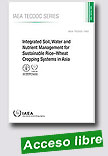 |
Integrated Soil, Water and Nutrient Management for Sustainable Rice–Wheat Cropping Systems in Asia
IAEA TECDOC , 2016, 160 p.
The rice-wheat system is a predominant cropping system in Asia providing food, employment and income, ensuring the livelihoods of about 1 billion of resource poor rural and urban people. However, the productivity of the current rice-wheat systems is seriously threatened by increasing land degradation and scarcity of water and labour, inefficient cropping practices and other emerging socio economic and |
environmental drivers. Responding to the need to develop alternate crop establishment methods and improved cropping practices, this publication summarizes the results from a joint FAO/IAEA coordinated research project on optimizing productivity and sustainability of rice-wheat cropping systems. It provides relevant information on how to modify existing water and nutrient management systems and improve soil management in both traditional and emerging crop establishment methods for sustainable intensification of cereal production in Asia.
Extraído de: http://www-pub.iaea.org/books/IAEABooks/11074/Integrated-Soil-Water-and-Nutrient-Management-for-Sustainable-Rice-Wheat-Cropping-Systems-in-Asia
|
 |
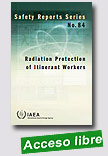 |
Radiation Protection of Itinerant Workers
IAEA Safety Reports Series, 2015, 144 p.
This publication addresses the protection and safety issues associated with the use of itinerant workers. Such workers are defined for this report as occupationally exposed workers, who work in supervised and/or controlled areas at one or more locations and are not employees of the management of the facility where they are working. It focuses on the necessary communication and cooperation to establish a clear allocation
|
of responsibilities among the relevant parties, including the itinerant worker, the employer of that worker and the management of the facility at which the work is occurring. Managerial and practical arrangements are described, to ensure the protection and safety of itinerant workers. Discussion topics include dose tracking and control, training, safety culture development and application of the requirements for protection and safety coherently with other requirements.
Extraído de: http://www-pub.iaea.org/books/IAEABooks/10788/Radiation-Protection-of-Itinerant-Workers
|
 |
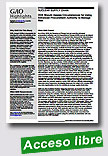 |
Department of Energy (DOE), through National Nuclear Security Administration (NNSA), is responsible for ensuring the safety and reliability of the nation’s nuclear weapons stockpile, among other nuclear weapons-related activities. According to NNSA, the trend toward a non-domestic supply chain for
|
components of nuclear weapons and related systems may pose risks to these weapons and systems. The National Defense Authorization Act for Fiscal Year 2014 provides the Secretary of Energy with an enhanced procurement authority, which may be used to exclude a supplier that poses a supply chain risk from a contract or subcontract, and limit disclosing the reason for the exclusion to the supplier.
The act includes a provision for GAO to report annually on DOE’s use of the enhanced procurement authority. This report assesses the extent to which DOE has (1) used and developed processes for using the authority, and (2) examined whether adequate resources are in place for using the authority. GAO reviewed DOE and NNSA documents, interviewed DOE
and NNSA officials, and interviewed M&O contractor representatives for seven NNSA sites—selected based on their NNSA management and activities.
Highlights | Report
Extraído de: http://www.gao.gov/products/GAO-16-710 |
 |
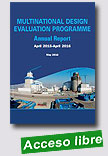 |
Multinational Design Evaluation Programme Annual Report
Nuclear Energy Agency (NEA), 07/06/16, 60 p.
The eighth Annual Report of the Multinational Design Evaluation Programme (MDEP) highlights achievements of the programme from April 2015 to April 2016. MDEP was established in 2006 as a multinational initiative to develop innovative approaches to leverage the resources and knowledge of the national regulatory authorities that are currently or will be tasked with the review of new nuclear power reactor designs. The nuclear regulatory authorities of 15 . |
countries participate in MDEP, which includes 5 design-specific working groups and 3 issue-specific working groups. The Nuclear Energy Agency facilitates MDEP activities by providing technical secretariat services for the programme
Extraído de: http://www.oecdnea.org/tools/publication?query=&div=&lang=
English&period=6m&sort=date&filter=1#p7304 |
 |

|
Strategic Considerations for the Sustainable Remediation of Nuclear Installations
Nuclear Energy Agency (NEA), 23/05/16, 110 p.
Nuclear sites around the world are being decommissioned and remedial actions are being undertaken to enable sites, or parts of sites, to be reused. Although such activities are relatively straightforward for most sites, experience has suggested that preventative action is needed to minimise the impact of remediation activities on the environment and the potential burden to future generations. Removing all |
contamination in order to make a site suitable for any use generates waste and has associated environmental, social and economic drawbacks and benefits. Site remediation should thus be sustainable and result in an overall net benefit.
This report draws on recent experience of NEA member countries in nuclear site remediation during decommissioning in order to identify strategic considerations for the sustainable remediation of subsurface contamination – predominantly contaminated soil and groundwater – to describe good practice, and to make recommendations for further research and development. It provides insights for the decision makers, regulators, implementers and stakeholders involved in nuclear site decommissioning so as to ensure the sustainable remediation of nuclear sites, now and in the future.
Extraído de: http://www.oecd-nea.org/tools/publication?query=&div=&lang=English&period=
6m&sort=date&filter=1#p7290
|
 |
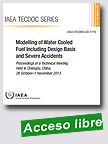 |
Modelling of Water Cooled Fuel Including Design Basis and Severe Accidents
IAEA TECDOC (CD-ROM), 2015, 380 p.
The first session of this technical meeting was devoted to code development for modeling fuel behaviour under plant normal operation conditions and anticipated operational occurnaces. Later sessions focused on modeling of fuel behaviour under design basis accidents (DBA) and severe accidents, including experimental support.
|
Six papers were presented in this session and ranged from studies of improved models for individual phenomena (gap heat transfer and burnup) to code coupling neutronics/thermalhydraulics/fuel performance) to general overviews of legacy and developing fuel performance codes(BaCo/BISON/Peregrine).
Extraído de: http://www-pub.iaea.org/MTCD/Publications/PDF/TE-1775_CD_web.pdf
|
 |
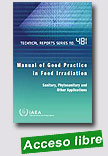 |
Manual of Good Practice in Food Irradiation: Sanitary, Phytosanitary and other Applications
IAEA Technical Reports Series, 2015, 85 p.
By introducing the technical aspects of food irradiation and providing examples of good practice when irradiating food for sanitary, phytosanitary and other purposes, this publication aims to assist operators of irradiation facilities treating food, and producers and traders of food and government officers involved in the authorization or inspection of irradiation facilities treating food. Guidance provided here, describing good |
practices, represents expert opinion but does not constitute recommendations made on the basis of a consensus of Member States.
Extraído de: http://www-pub.iaea.org/MTCD/Publications/PDF/trs481web-98290059.pdf
|
 |
|
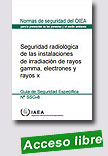
|
Seguridad Radiológica de las Instalaciones de Irradiación de Rayos Gamma, Electrones y Rayos X
Guía de Seguridad Específica - OIEA, 2015, 120 p.
El objetivo de esta Guía de seguridad es formular recomendaciones acerca de cómo cumplir los requisitos de las Normas básicas internacionales de seguridad con respecto a las instalaciones de irradiación. Esta Guía de seguridad proporciona recomendaciones prácticas específicas sobre el diseño y el funcionamiento seguros de los irradiadores de rayos gamma, por haces de electrones y
|
con rayos X destinadas a las entidades explotadoras y los diseñadores de esas instalaciones, así como a los órganos reguladores.
Extraído de: http://www-pub.iaea.org/books/IAEABooks/8905/Radiation-Safety-of-Gamma-Electron-and-X-Ray-Irradiation-Facilities
|
 |
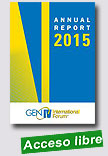 |
Generation IV International Forum Annual Report 2015
Nuclear Energy Agency (NEA), 16/06/16, 138 p.
This ninth edition of the Generation IV International Forum (GIF) Annual Report highlights the main achievements of the Forum in 2015. On 26 February 2015, the Framework Agreement for International Collaboration on Research and Development of Generation IV Nuclear Energy Systems was extended for another ten years, thereby paving the way for continued collaboration among participating countries. GIF organised the 3rd Symposium in Makuhari Messe, Japan in |
May 2015 to present progress made in the development of the six generation IV systems: the gas-cooled fast reactor, the sodium-cooled fast reactor, the supercritical-water-cooled reactor, the very-high-temperature reactor, the lead-cooled fast reactor and the molten salt reactor. The report gives a detailed description of progress made in the 11 existing project arrangements. It also describes the development of safety design criteria and guidelines for the sodium-cooled fast reactor, in addition to the outcome of GIF engagement with regulators on safety approaches for generation IV systems.
Extraído de: http://www.oecd-nea.org/tools/publication?query=&div=&lang=English&period=
6m&sort=date&filter=1#p7303
|
 |
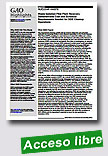 |
Nuclear Waste: Waste Isolation Pilot Plant Recovery Demonstrates Cost and Schedule Requirements Needed for DOE Cleanup Operations
Government Accountability Office (GAO - US), August 4, 2016.
DOE's Waste Isolation Pilot Plant (WIPP) is the only deep geologic repository for the disposal of U.S. defense-related nuclear waste. In February 2014, waste operations were suspended following a truck fire and an unrelated radiological release. DOE estimated in February 2015 that it would
|
complete recovery activities and restart limited waste operations by March 2016. To resume full operations, DOE planned to build a new ventilation system at WIPP. DOE completed an AOA to identify the best solution for this system in December 2015.
The Senate Report accompanying a bill for the National Defense Authorization Act for Fiscal Year 2015 included a provision for GAO to review WIPP operations. This report examines the extent to which DOE (1) met its initial cost and schedule estimates for restarting waste disposal operations, and (2) followed best practices in analyzing and selecting an alternative for the new ventilation system. GAO examined documentation on the WIPP recovery estimates. GAO compared DOE's February 2015 cost and schedule estimates and AOA with best practices GAO published.
Highlights | Report
Extraído de: http://www.gao.gov/products/GAO-16-608
|
 |
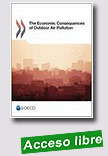 |
The Economic Consequences of Outdoor Air Pollution
OECD, 09 June 2016, 116 p.
This report provides a comprehensive assessment of the economic consequences of outdoor air pollution in the coming decades, focusing on the impacts on mortality, morbidity, and changes in crop yields as caused by high concentrations of pollutants. Unless more stringent policies are adopted, findings point to a significant increase in global emissions and concentrations of air pollutants, with severe impacts on human health and the environment. The market impacts of outdoor air
|
pollution are projected to lead to significant economic costs, which are illustrated at the regional and sectoral levels, and to substantial annual global welfare costs.
Report
Extraído de: http://www.oecd-ilibrary.org/environment/the-economic-consequences-of-outdoor-air-pollution_9789264257474-en
|
 |
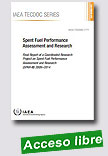 |
Spent Fuel Performance Assessment and Research: Final report of a Coordinated Research Project on Spent Fuel Performance Assessment and Research (SPAR III) 2009-2014
IAEA TECDOC, 2015, 222 p.
The purpose of this document is to update the technical basis for the long term storage of power reactor spent fuel. This has been achieved through reporting the latest findings from participating Members States on: Information on fuel and materials performance evaluation under wet and dry storage; Information on monitoring programmes of spent fuel and |
storage systems; Information on spent fuel storage experience of the participating countries; Sub-chapters on areas of topical interest; A summary of CRP research activities.
This document with those previously published provide the technical knowledge base for the long term storage of power reactor spent fuel; i.e. the overall objective for the CRPs.
The specific objectives for this CRP, as out-lined above, were all met. It is also brought to the attention of the reader that since the completion of SPAR-II CRP a
Extraído de: http://www-pub.iaea.org/MTCD/Publications/PDF/TE-1771_web.pdf
|
| |
| |
|
|
|
